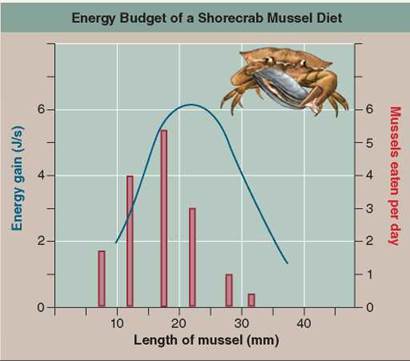THE LIVING WORLD
Unit Eight. The Living Environment
37. Behavior and the Environment
37.14. Human Social Behavior
One of the most profound lessons of biology is that we human beings are animals, quite close relatives of the chimpanzee, and not some special form of life set apart from the earth’s other creatures. This biological view of human life raises an important issue as we conclude this chapter. To what degree are the animal behaviors we have described in this chapter characteristic of the social behavior of humans?
Genes and Human Behavior
As we have seen repeatedly, genes play a key role in determining many aspects of animal behavior. From maternal behavior in mice to migratory behavior in songbirds, changes in genes have been shown to have a profound impact. This leads to an important prediction. If behaviors have a genetic basis, and if behaviors affect an animal’s ability to survive and raise young, then surely behaviors must be subject to natural selection, as are any other gene-mediated traits that impact survival. Ethology, the study of animal behavior in natural conditions, has provided ample evidence that behaviors do indeed evolve.
To the degree that social behaviors are affected by genes (and both theory and evidence strongly suggest they are), the complex social behaviors of animals, including humans, should also evolve. The study of this facet of animal behavior, often called sociobiology, was pioneered by E. O. Wilson of Harvard University. It has proven highly controversial.
Genes certainly affect human behavior in important ways. Human facial expressions are similar the world over, no matter the culture or language, arguing that they have a deep genetic basis. Infants born blind still smile and frown, even though they have never seen these expressions on another face. Similarly, studies of identical twins demonstrate that personality and intelligence are highly heritable—well over 50% of the variance (the “scatter” among individuals) in these traits is due to the contribution of genes.
It is also true, however, that learning has a huge impact on how humans behave. Of the 40 different consonant sounds that humans can make, babies in the United States learn some 24, and then most quickly lose the ability to make the others. Just as birds learn songs and migration patterns from experienced adults, so human babies learn to speak from listening to the adults around them.
Diversity Is the Hallmark of Human Culture
When a group of biologists who studied social behavior in chimpanzees among seven widely separated areas compared notes, they identified 39 behaviors involving such things as social behavior, courtship, and tool use that were common in some groups but absent in others. Each population seemed to have a distinct repertoire of behaviors. It seems that each population has developed its own collection of customary behaviors, which each generation teaches its children. In a word, chimpanzees have culture.
No animal, not even our close relative the chimpanzee, exhibits cultural differences to the degree seen in human populations (figure 37.19). There are polyandrous, polygynous, and monogamous societies. There are human groups in which warfare is common, others in which it never occurs. In some cultures, marriage to first cousins is forbidden; in others, it is encouraged. The variation in social behavior of other species is vanishingly small compared to the enormous diversity of human cultures.

Figure 37.19. A New York City street scene.
To what degree human culture is the product of evolution acting on behavior-determining genes is a question that is hotly debated by behavioral biologists. However one chooses to answer this question, it is perfectly clear that much of our behavior is molded by experience. Human cultures, and the behaviors that produce them, change very rapidly, far too rapidly to reflect genetic evolution. Human cultural diversity, a hallmark of our species, is certainly strongly influenced, if not largely determined, by learning and experience.
Key Learning Outcome 37.14. In humans, as in other animals, behavior is molded by experience within limits set by our genes. Both heredity and learning play key roles in determining how we behave.
Inquiry & Analysis
Many behavioral ecologists claim that animals exhibit so-called optimal foraging behavior. The idea is that because an animal's choice in seeking food involves a trade-off between the food's energy content and the cost of obtaining it, evolution should favor foraging behaviors that optimize the trade-off.
While this all makes sense, it is not at all clear that this is what animals would actually do. This optimal foraging approach makes a key assumption—that maximizing the amount of energy acquired will lead to increased reproductive success. In some cases this is clearly true. As discussed earlier in this chapter, in ground squirrels, zebra finches, and orb-weaving spiders, researchers have found a direct relationship between net energy intake and the number of offspring raised successfully.
However, animals have other needs besides energy, and sometimes these needs conflict. One obvious "other need,” important to many animals, is to avoid predators. It makes little sense for you to eat a little more food if doing so greatly increases the probability that you yourself will be eaten. Often the behavior that maximizes energy intake increases predation risk. A shore crab foraging for mussels on a beach exposes itself to predatory gulls and other shore birds with each foray. Thus the behavior that maximizes fitness may reflect a trade-off, obtaining the most energy with the least risk of being eaten. Not surprisingly, a wide variety of animals use a more cautious foraging behavior when predators are present—becoming less active and staying nearer to cover.

So what does a shore crab do? To find out, an investigator looked to see if shore crabs in fact feed on those mussels that provide the most energy, as the theory predicts. He found that the mussels on the beach he studied come in a range of sizes, from small ones less than 10 mm in length that are easy for a crab to open but yield the least amount of energy, to large mussels over 30 mm in length that yield the most energy but also take considerably more energy to pry open. To obtain the most net energy, the optimal approach, described by the blue curve in the graph above, would be for shore crabs to feed primarily on intermediate-sized mussels about 22 mm in length. Is this in fact what shore crabs do? To find out, the researcher carefully monitored the size of the mussels eaten each day by the beach's population of shore crabs. The results he obtained—the numbers of mussels of each size actually eaten—are presented in the red histogram above.
1. Applying Concepts. What is the dependent variable in the curve? in the histogram?
2. Making Inferences
a. What is the most energetically optimal mussel size for the crabs to eat, in mm?
b. What size mussel is most frequently eaten by crabs, in mm?
3. Drawing Conclusions. Do shore crabs tend to feed on those mussels that provide the most energy?
4. Further Analysis. What factors might be responsible for the slight difference in peak prey length relative to the length optimal for maximal energy gain?

1. Innate behavior patterns
a. can be modified if the stimulus changes.
b. cannot be modified, as these behaviors seem built into the brain and nervous system.
c. can be modified if environmental conditions begin to vary over a long period, a year or more.
d. cannot be modified, as these behaviors are learned while very young.
2. The study of mouse maternal behavior shows a clearer genetic effect on behavior than lovebird or human twin studies because
a. there is a clear link between presence or absence of a specific gene, a specific metabolic pathway, and a specific behavior.
b. the behavior of mice was less complex and easier to study than that of lovebirds or human twins.
c. parental care has a larger influence on mice than on lovebirds and humans.
d. None of the above.
3. Training a dog to perform tricks using verbal commands and treats is an example of
a. nonassociative learning.
b. operant conditioning.
c. classical conditioning.
d. imprinting.
4. Behavior can be tied to ecology and evolution by considering what the behavior does to increase
a. body size.
b. number of breeding sites.
c. reproductive fitness.
d. territory size.
5. The selection of foods and the journey to seek those foods is called
a. territoriality.
b. imprinting.
c. migratory behavior.
d. foraging behavior.
6. Courtship rituals are thought to have come about through
a. intrasexual selection.
b. agonistic behavior.
c. intersexual selection.
d. kin selection.
7. A mating system where the female mates with more than one male is
a. protandry.
b. polyandry.
c. polygyny.
d. monogamy.
8. Sharing of blood meals between fed and hungry vampire bats and the shunning of a bat who takes but doesn’t share are examples of
a. helpers.
b. kin selection.
c. reciprocity.
d. group selection.
9. Bird offspring who help their parents care for younger offspring are showing
a. brood parasitism.
b. kin selection.
c. reciprocity.
d. group selection.
10. While vertebrate animal societies are more loosely structured than insect societies, the organization of these societies is most influenced by
a. which females are receptive to reproduction.
b. migration patterns.
c. how large the territory is compared to neighboring societies.
d. ecological factors such as food type and predation.